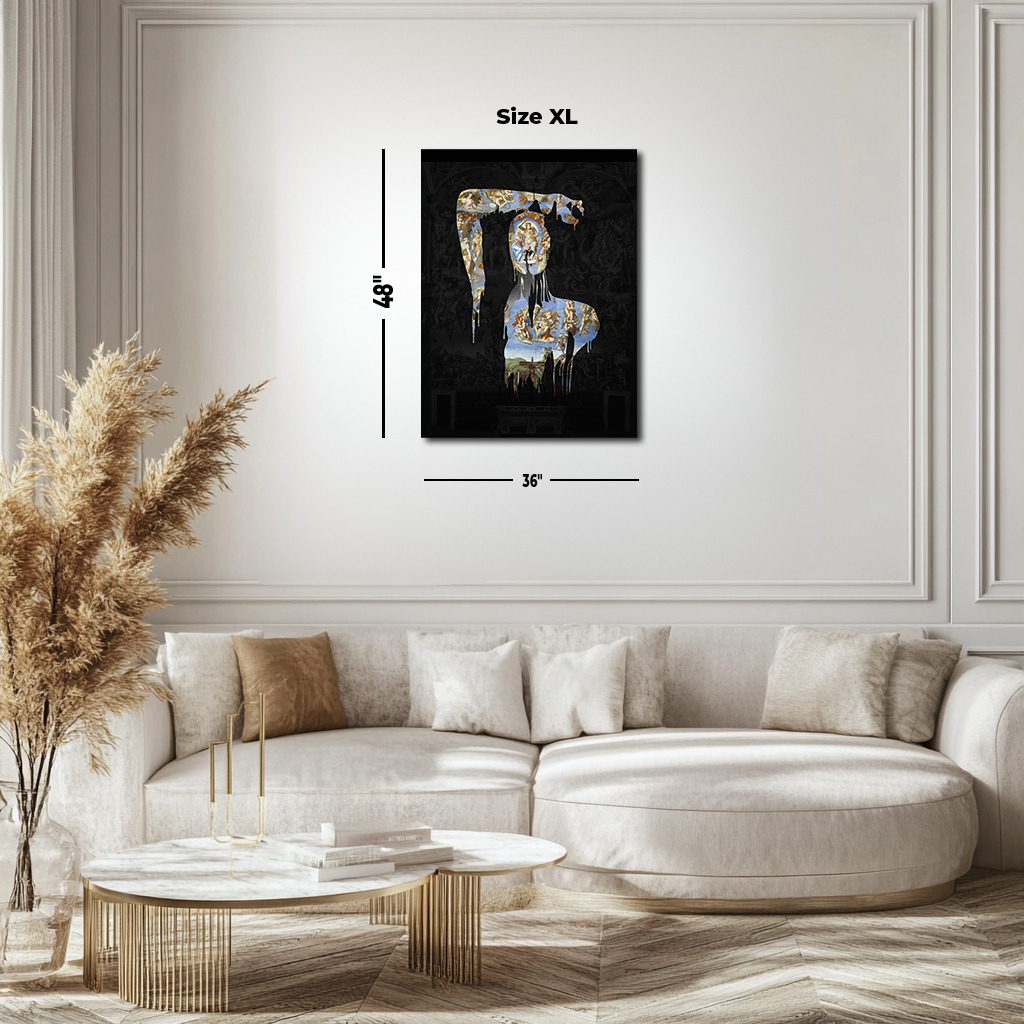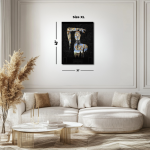The Veil of Eternity: A Conceptual Reflection on Michelangelo’s The Last Judgment
"The Veil of Eternity: A Conceptual Reflection on Michelangelo’s The Last Judgment" reimagines the Vatican fresco through a shadowy abstraction, exploring themes of divine judgment and human fragility. The silhouette, reminiscent of a veiled figure, frames the celestial and terrestrial elements of the original artwork, with vibrant blues symbolizing purity and blackened drips representing sin. This conceptual reinterpretation amplifies the emotional tension of Michelangelo’s masterpiece, questioning the permanence of earthly actions in the context of eternity. Through digital layering and abstraction, this piece offers a modern perspective on the timeless power of divine reckoning.
Please see Below for Details…
Hotline Order:
Mon - Fri: 07AM - 06PM
404-872-4663
Michelangelo Buonarroti’s The Last Judgment , painted between 1536 and 1541 on the altar wall of the Sistine Chapel in Vatican City, remains one of the most profound and ambitious artistic achievements of the High Renaissance. This reimagining, The Veil of Eternity , presents a conceptual abstraction of Michelangelo’s masterpiece, layering the original’s dramatic figures and celestial themes into a haunting silhouette, dripping with existential gravitas.
The original fresco depicts the second coming of Christ and the final judgment of souls, portraying the ascent of the blessed and the descent of the damned. This conceptual piece preserves the dynamic tension of the original while abstracting its elements to create a visceral and symbolic commentary. The central silhouette, reminiscent of a shrouded figure, echoes the themes of mortality, divine judgment, and eternal salvation, with Michelangelo’s figures emerging through the cracks of this shadowy form.
The colors within the silhouette hold significant meaning. The vibrant blues and heavenly whites of the ascending souls symbolize purity, hope, and divine grace, while the darker hues of black and brown, dripping like molten despair, represent the weight of sin and eternal damnation. These elements reflect Michelangelo’s original dramatic contrasts, but they are reimagined here to evoke a sense of dissolution, as though the boundaries between the celestial and terrestrial realms are melting away.
The gold-tinted undertones that radiate faintly across the silhouette symbolize the omnipresence of divine judgment. Gold, often associated with eternity and holiness, serves as a reminder of the divine light that both uplifts and scrutinizes humanity. The overlapping imagery of the fresco’s figures creates an impression of chaos and order, reinforcing the themes of divine justice as a universal and inevitable truth.
As an artist, this reinterpretation is my reflection on Michelangelo’s ability to capture the weight of divine reckoning. By framing The Last Judgment within the void-like silhouette, I sought to explore the human condition through abstraction. The dripping texture of the silhouette conveys the fragility of existence, as though humanity itself is but a fleeting shadow against the backdrop of eternity. The decision to blur and dissolve some of the fresco’s figures while amplifying others was an attempt to question the permanence of earthly actions and their consequences in the divine realm.
This piece was created using digital layering techniques, blending photographic textures and abstract forms to reinterpret Michelangelo’s iconic work in a contemporary context. The dark void-like figure serves as a metaphor for the unknown—the mysteries of faith, judgment, and the afterlife that humanity grapples with endlessly. The result is a contemplative work that pays homage to Michelangelo’s genius while encouraging viewers to confront their own interpretations of morality, existence, and the divine.
Add your review
Your email address will not be published. Required fields are marked *
Please login to write review!
Looks like there are no reviews yet.










